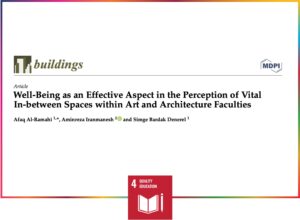
The study, utilizing a mixed-methods approach including surveys and observations, focused on eleven critical criteria related to well-being requirements. These criteria encompassed physical features, circulation patterns, ergonomic considerations, lighting, acoustics, and social-cultural aspects, among others.
Findings indicate that while in-between spaces are traditionally viewed as mere connectors within buildings, they hold potential as dynamic, interactive environments conducive to informal interactions and psychological connection among users. However, the study highlights a tendency to overlook key dimensions such as circulation patterns, ergonomic furnishings, color schemes, and the incorporation of accessories.
Moreover, the research underscores the importance of designing these spaces not only to facilitate necessary activities but also to cater to user demands, promoting engagement and various activities such as working, resting, and socializing.
Recommendations from the study emphasize the need for architects and designers to prioritize well-being requirements in the design process, fostering the development and vitality of in-between spaces. Additionally, it suggests greater utilization of these areas by faculty members for learning activities and group work, further enhancing user engagement.
The study acknowledges limitations in its scope, particularly the exclusion of exterior in-between spaces and the need for further research to explore well-being from diverse perspectives and user groups.
Overall, this research contributes valuable insights into the role of in-between spaces in educational environments, advocating for their thoughtful design to enhance user well-being and productivity.
More Information:
https://www.mdpi.com/2075-5309/13/6/1467